Nature Conservation 2020 — 25. 3. 2020 — Nature and Landscape Management — Print article in pdf
Where is Šumava National Park heading?
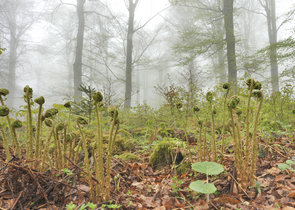
I believe in an authentic internationally recognized national park, but the path to it is thorny, slow and cautious…
The hitherto maturing National Park can easily be compared to the life of a human being. Its birth was full of enthusiasm and great plans developed by fathers, mothers, uncles and aunts, grandmothers and grandfathers – and each person had a different plan. But everybody agreed that it is necessary to put the best into the child's life.
Free-flowing youth
And so the National Park Authority got control over forests, minor watercourses, and the Ministry of the Environment even provided competences in land-use planning. But the parents got divorced. Land-use planning went to the Ministry of Regional Development, forestry management to municipalities. And all of a sudden, the child was supposed to grow up in alternating care and adapt to another relative in all aspects. It should conserve nature, implement the forestry act and develop the area sustainably. Then adolescence started and the National Park slowly began to understand its role in society. It distanced itself from parents and relatives, which caused problems. The desire to fulfil the dream of an authentic national park was impeded several times. One moment it looked like its future would be aligned with the life of its mother, Šumava Protected Landscape Area, and that National Park would just be its name, not its function. But now that it has already passed the age of 25, it knows that rebellion does not get you anywhere. At the same time, it has gained a clear idea of its future, at least until its midlife crisis, i.e. until its 45th birthday… This clear idea is what we would like to discuss today.
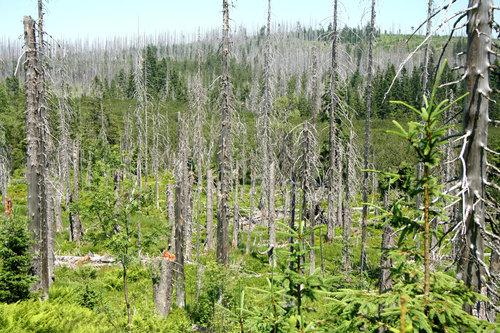
Mt. Blatný vrch. Photo Pavla Čížková
Wilderness – a nasty word
There were times when the word ‘succession’ (at least in the sense of spontaneous recovery of a forest on abandoned land) was popular with staff of the Šumava National Park Authority. Then there was a short period when ‘wilderness’ was very popular, but also this soon became a forbidden word. Well, everybody has a slightly different idea of wilderness. Some people see it as an untouched tropical virgin forest, others as a long-abandoned garden where people go and have a smoke. In our National Park, the second option rather prevails. We do not have many virgin forests. Although virgin forests still covered 70% of the National Park area in the early 19th century, only one century was needed to reduce this number to 15%. But why is it a national park at all? Because after felling of the virgin forests no cultural tree plantations were created, but tree offspring from the original forests grew up and aged here. Historical records speak of legions of young spruce trees growing in old forests. And until the 1960s, artificial restoration, if any, was mainly carried out by sowing seed from local cones, out of which the seeds were extracted at local seed-extraction plants. Only about 35% of the present forests have its origin in a combination of natural and artificial restoration or have been planted on farmland. Yes, there are hardly any virgin forests in Šumava, but somewhere wilder, elsewhere less wild offspring of the original virgin forests grows here. And since 2007, nearly a quarter (23%) of the National Park area has been left to natural processes. In this area, we have once again released the reins of ‘wilderness’.
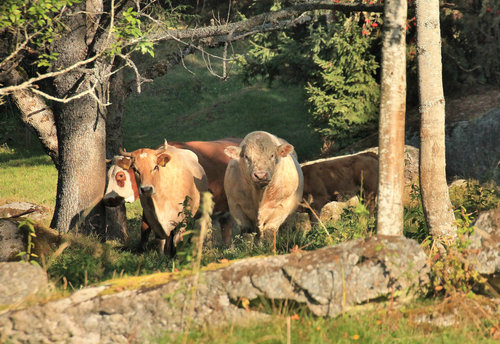
Kamenná hlava. Photo Pavla Čížková
Conservation experiment
Since the National Park was established, it has been a legitimate opinion that leaving a forest to natural processes is an ‘experiment’ which nobody has ever tried out. Yet it was already rather well known that before the arrival of man, forests lived their own life and were uprooted by storms and attacked by bark beetles, and even also burned. From the perspective of historical forest descriptions and results of pollen analyses of lake and peat sediments, forest management rather than natural processes seemed to be an experiment. The way in which (predominantly spruce) forests react to thinning, following from natural processes, has evoked passion – and still does. Quite a number of people probably still believe that if the bark beetle had been fought by foresters, such a massive tree death would never have occurred, despite what we already know today. Firstly, we know that in the time of the bark beetle outbreak in Šumava NP, forests where we had properly fought against the beetle neither remained protected. Secondly, it was shown that during both massive outbreaks in Šumava NP, the population density of bark beetles in intervention and non-intervention areas changed at the same speed, so that is was not demonstrated that harvesting of infested spruce trees had a real effect on bark beetle reduction. Rather the weather and pests were the reason for its decline. Thirdly, it can be seen in our entire country today that massive outbreaks can occur even despite large and uncompromising interventions. And fourthly, felling a forest is not the ideal start for natural processes. And it is natural processes in most of the National Park area which is our present objective.
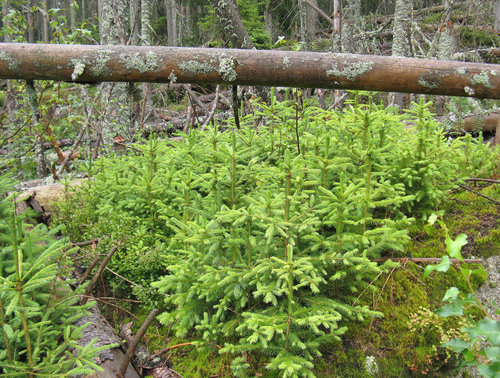
Kamenné moře on Mt. Plechý. Photo Pavla Čížková
Proposal for new zonation
The new zonation model is fundamentally different from the conventional one: whereas in the zonation delimited in 1992, Zones 1 were automatically open to the public on marked routes, and management interventions were not clearly limited in them, the new zones do not deal with public access, but define management regimes relatively strictly. Public access is not anymore limited by zonation, but by a different measure, the designation of Quiet Zones.
The ‘Natural Zone’ will be the wildest zone. We designated to areas where natural processes can be given a free hand already now. In truth, we are not completely revolutionary. This zone is kept in about the same territory as where natural processes have been allowed hitherto. The Natural Zone is proposed for 27.7 % of the National Park area. To this zone, a Near-natural Zone has been attached, including especially forest ecosystems of which we are convinced that they can be transferred to the Natural Zone – in other words, turned into wilderness – in a rather short term. The natural processes here play a main role already today and we correct them just moderately or take action against the spread of spruce bark beetle to surrounding forests. The expert proposal also represents 27% of the National Park area, but after the hearings we are heading for 24%.
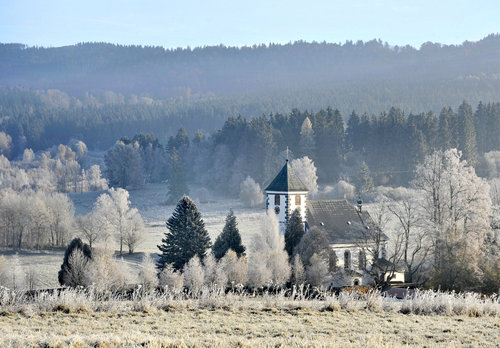
Morning at Želnava. Photo Zdeněk Patzelt
The largest proportion, 45% of the National Park area, is to be included into the Concentrated Management Zone. This is mostly forest- or farmland where we will take care of nature in the following decades, concentrating on the preservation of unique, protected or threatened species or species of European interest and also habitats of European interest. After hearings with the municipalities, the Concentrated Management Zone could be expanded to almost 48%.
All settlements forming a spatially connectable whole, built-up areas and land intended to be built up in land use plans, have been included into the Cultural Landscape Zone. Although the smallest part of the National Park area (1%, 642 ha), it is important. Really built-up area (with gardens and yards connected to them) represents less than half of this area, so over 320 ha is still available for municipal development in the National Park. Besides, scattered in the other zones throughout the National Park, other buildings (mostly individual houses) are found which cannot be included in the Cultural Landscape Zone for their small size and seclusion. Also cottages are part of some of the remaining three zones, but exempt from zone regulations. They cover roughly another hundred hectares. It is important to note that the majority of legal restrictions in the most of the National Park area do not apply to areas which are or may be built up. One may camp, make fire or even salt roads or pavements here in winter.

Světlé hory. Photo Pavel Hubený
Zones and Natura 2000
Now and then, the idea that zonation should especially secure the conservation of species and habitats of the Natura 2000 network pops up among conservationists. This is indeed one of the main tasks of a national park. It is therefore necessary to set up new zones in a way that natural processes take place mainly there where it does not ‘bother’ Natura 2000, and to include Natura 2000 habitats which demand our care into the Concentrated Management Zone. But also this approach has its shortcomings. For example, the minimum acreage of one Concentrated Management Zone segment is 2 ha, but non-forest Natura 2000 habitats are often just about 0.5 ha large. Natural Natura 2000 woodland habitats and peatbogs should be included into the Natural and Near-natural Zones, grasslands on secondary non-forest land rather into the Concentrated Management Zone. According to degree of naturalness, natural woodland habitats are for 44% situated in the Natural Zone and for 29% in the Near-natural Zone. In the next zonation delimitation (in 15 years) we will thus be able to leave a full 73% of woodland habitats to natural processes. Two-thirds of all forest bogs, raised bogs and transitional bogs are also included in these zones. By contrast, 85% of submontane Nardus grasslands are situated in the Concentrated Management Zone and Cultural Landscape Zone, just as 66% of X-coded habitats (strongly influenced or created by man).
Will Quiet Zones bring peace?
They certainly will, although there will certainly be a lot of fuss around them before their designation. As already stated, Quiet Zones are not regulated by management – that is the task of zonation – but by visit rate. Freedom of movement is one of the basic civil rights, enshrined in the Charter of Fundamental Rights and Freedoms, so it can only be limited in justified cases. Our Quiet Zone proposal tries to get to the core. This means that Quiet Zones, which are according to law accessible only by routes and paths reserved by nature conservation authorities, cover 16.7% of the National Park area and represent only the most sensitive and threatened minimum. We concentrate especially on animal species, exceptionally also plants and peatbogs which are protected and easily disturbed. Conservation of the western capercaillie (Tetrao urogallus) will be the highest priority of the National Park in this. The sensitivity and population density of this bird has been dealt with in No. 1/2019 of this magazine. For its conservation we want to create, in collaboration with Bavarian Forest National Park, a compact joint area on both sides of the border to which the same rules will apply. We aim at maximum protection of the real core of the capercaillie population in the area of the Modrava moors and the border ridge between Prameny Vltavy (Vltava Springs) and Plesná. This area will have time-limited access and the density of access roads will be minimal. At the same time, hunting and forestry interventions will be banned on both sides of the border.
The second largest Quiet Zone area has been dedicated to the protection of the Eurasian black grouse (Tetrao tetrix). Its population is markedly smaller than that of the capercaillie and the situation is not yet improving. Grouses are not concentrated in a coherent territory, but inhabit plains in marginal parts of the National Park which are rather remote from each other. This fragmentation of its populations may be a great problem in preserving the species in the long term. At the moment, a DNA analysis of individuals, based on collected dung, is being completed. This year for the first time we will obtain detailed information on the real grouse population numbers, on relatedness of individuals and also on the question how far individual birds fly. Protection of its courting grounds and nesting habitats is today linked to the protection of nesting grounds of common crane (Grus grus), whose numbers in Šumava have slightly increased over recent years. We also have a plan to protect three territories which are permanently inhabited by reproductive lynx females. These areas are sufficiently varied, rocky and inaccessible, and have game concentrations which lynxes use for hunting. The territories include parts of the Vydra and Křemelná canyons and the scree forest at Medvědice. We further want to dedicate some small-scale quiet areas with limited access restricted to the spring months to the protection of peregrine falcon (Falco peregrinus). Moreover, the quillwort Isoëtes echinospora in lake Plešné jezero will be protected by disallowing entry into the lake, similarly to the protection of some peatbogs and wetlands situated close to paths where visitor numbers are extremely high.
The 2017 amendment to Act No. 114/1992 has brought really revolutionary changes. The separation of management, connected with the system of Nature Conservation Zones, from visitor regulation, which involves a system of Quiet Zones, is still strange and new. This has led to the creation of areas without human intervention which are however free to visit, and on the other hand, managed areas with temporarily limited access to visitors (historical courting grounds of black grouse on meadows). This change in the way nature is managed brings us closer to Western Europe, where this approach is common, and enables us to unify the practical approaches on the Czech and Bavarian side of the state border, making Šumava National Park and Bavarian Forest National Park speak a common language again.

